Potential Output: Concepts and Measurement - Department of Labour
Potential Output: Concepts and Measurement - Department of Labour
Potential Output: Concepts and Measurement - Department of Labour
Create successful ePaper yourself
Turn your PDF publications into a flip-book with our unique Google optimized e-Paper software.
Darren Gibbs 105<br />
TABLE 1: Estimated potential growth rates <strong>and</strong> magnitude <strong>of</strong> output gap<br />
Method used Growth rate <strong>Output</strong> gap<br />
tp1 2.21<br />
tp2 1.06<br />
yl1 4.05 -1.52<br />
yl2 3.54<br />
yk1 3.16 3.43<br />
yk2 1.52<br />
pf1 1.39 1.34<br />
hp1600 1.73 3.41<br />
hp200 3.55 1.52<br />
hp100,000 1.10 3.53<br />
bf1600 3.55 -0.25<br />
bf200 5.42 -1.10<br />
bf100,000 1.50 -0.20<br />
mfa1600 2.79 -0.90<br />
mfa200 4.19 -1.95<br />
mfa100,000 1.62 -1.83<br />
mfb1600 3.76 -0.76<br />
mfb200 4.94 -1.75<br />
mfb100,000 1.66 -0.35<br />
As Table 1 illustrates the various measures produce vastly different<br />
conclusions regarding the potential growth rate over the year to March 1994, <strong>and</strong><br />
the size <strong>and</strong> sign <strong>of</strong> the output gap. If, for example, mfa200 is the correct estimate<br />
<strong>of</strong> potential output then, assuming the potential growth rate over the year to<br />
March 1995 is the same as in 1994, this would imply that the economy could<br />
sustain a further 6.1 percent before the output gap termed positive <strong>and</strong> pressures<br />
on inflation developed. 16 On the other h<strong>and</strong>, if pf1 is the correct estimate <strong>of</strong><br />
potential output, then the estimates suggest that inflationary pressures are likely<br />
to have been developing since the beginning <strong>of</strong> last year. The question is, how<br />
does one select which (if any) is the best estimate?<br />
5 Econometric properties <strong>of</strong> estimated output gaps<br />
In section 4 we estimated 19 different output gaps. Given that the different<br />
estimates led to different conclusions, the usefulness <strong>of</strong> these measures will be<br />
limited; unless one estimate can be isolated as being superior to the rest, or the<br />
range <strong>of</strong> valid alternatives can at least be narrowed down. In this section we<br />
make use <strong>of</strong> both correlation <strong>and</strong> regression analysis in an attempt to do<br />
just that.<br />
16<br />
The estimate <strong>of</strong> 6.1 percent is calculated by summing last period’s output gap <strong>and</strong> the<br />
negative <strong>of</strong> the estimated potential growth rate.



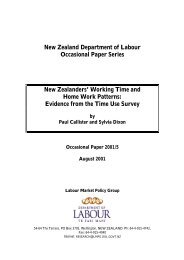

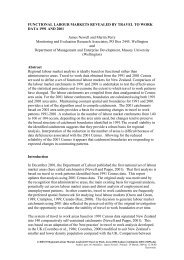

![a note on levels, trends, and some implications [pdf 21 pages, 139KB]](https://img.yumpu.com/27285836/1/184x260/a-note-on-levels-trends-and-some-implications-pdf-21-pages-139kb.jpg?quality=85)


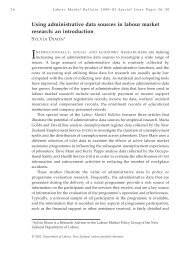
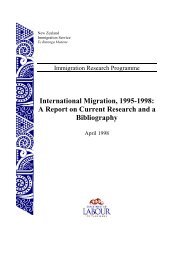

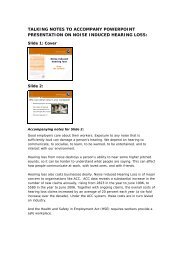
![Labour Market Trends and Outlook - 1996 [pdf 18 pages, 94KB]](https://img.yumpu.com/27285764/1/184x260/labour-market-trends-and-outlook-1996-pdf-18-pages-94kb.jpg?quality=85)

